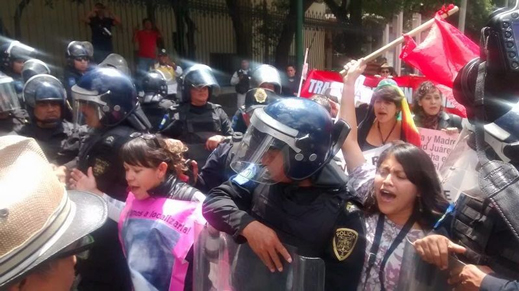How Twitter Bots Turn Tweeters into Activists
If a team of researchers gets its way, the activist networks of the future could be organized by Twitter bots.

A recent study published by Microsoft details a cohort of Twitter bots that targeted and challenged people who tweeted about government corruption in Latin America to take specific action. Some bots asked for potential solutions from the tweeters, while others offered messages of solidarity. The researchers dubbed the system “Botivist.”
“We wanted to make it really easy for activists to reach out into large crowds and be able to recruit people and get them to start contributing to their cause without having to invest much time,” says Saiph Savage, an assistant professor at West Virginia University and coauthor of the paper.
The bots tweeted at people who tweeted phrases such as “corruption” and “impunity” with different types of requests for them to take action. The bots also tried to organize potential volunteers into groups by tweeting at multiple people at once and suggesting they collaborate.
Overall, 45 percent of the contact efforts made by the bots were met with a reply. Direct requests for participation, which included questions such as “How do we fight corruption in our cities?” had the highest success rate, with a reply rate of 81 percent.
The researchers decided to be upfront about the bots’ nonhuman status and included the word “bot” in their Twitter handles and profile description. Potential volunteers responded negatively when the clearly nonhuman bots took on a more human tone; tweets expressing solidarity with potential volunteers had the lowest reply rate at 21 percent.
“People actually started questioning whether bots should be involved in this kind of initiative and stopped participating,” Savage says.
The study was inspired in part by politicians’ use of bots. Mexican president Enrique Peña Nieto boosted his campaign with the help of Twitter bots. When Twitter erupted over the disappearance of a group of students in Mexico in 2014, bots drowned out the real conversation on a related hashtag with empty tweets. The researchers decided to see how they could be used for positive campaigns instead.
The research team plans to eventually roll the tool out in the real world. Early partners include PETA, climate change activists, and workers’ rights advocates in Mexico. Even organizations like Wikipedia could use Botivist to find new contributors, according to Savage.
The bot network could be useful for targeting potential volunteers who otherwise might not be familiar with activism opportunities, or to anonymize dangerous types of reporting. Savage said the platform could be used to identify terrorism without citizens having to risk their name being exposed.
Botivist is also able to connect activists to one another, giving rise to organized networks of volunteers. The next step could be to delegate more responsibility based on volunteers’ level of interaction with the robot.
“They might just need a little push to get involved … and really do things that have an impact in a city and even countrywide,” Savage says.
Keep Reading
Most Popular
Large language models can do jaw-dropping things. But nobody knows exactly why.
And that's a problem. Figuring it out is one of the biggest scientific puzzles of our time and a crucial step towards controlling more powerful future models.
How scientists traced a mysterious covid case back to six toilets
When wastewater surveillance turns into a hunt for a single infected individual, the ethics get tricky.
The problem with plug-in hybrids? Their drivers.
Plug-in hybrids are often sold as a transition to EVs, but new data from Europe shows we’re still underestimating the emissions they produce.
Stay connected
Get the latest updates from
MIT Technology Review
Discover special offers, top stories, upcoming events, and more.